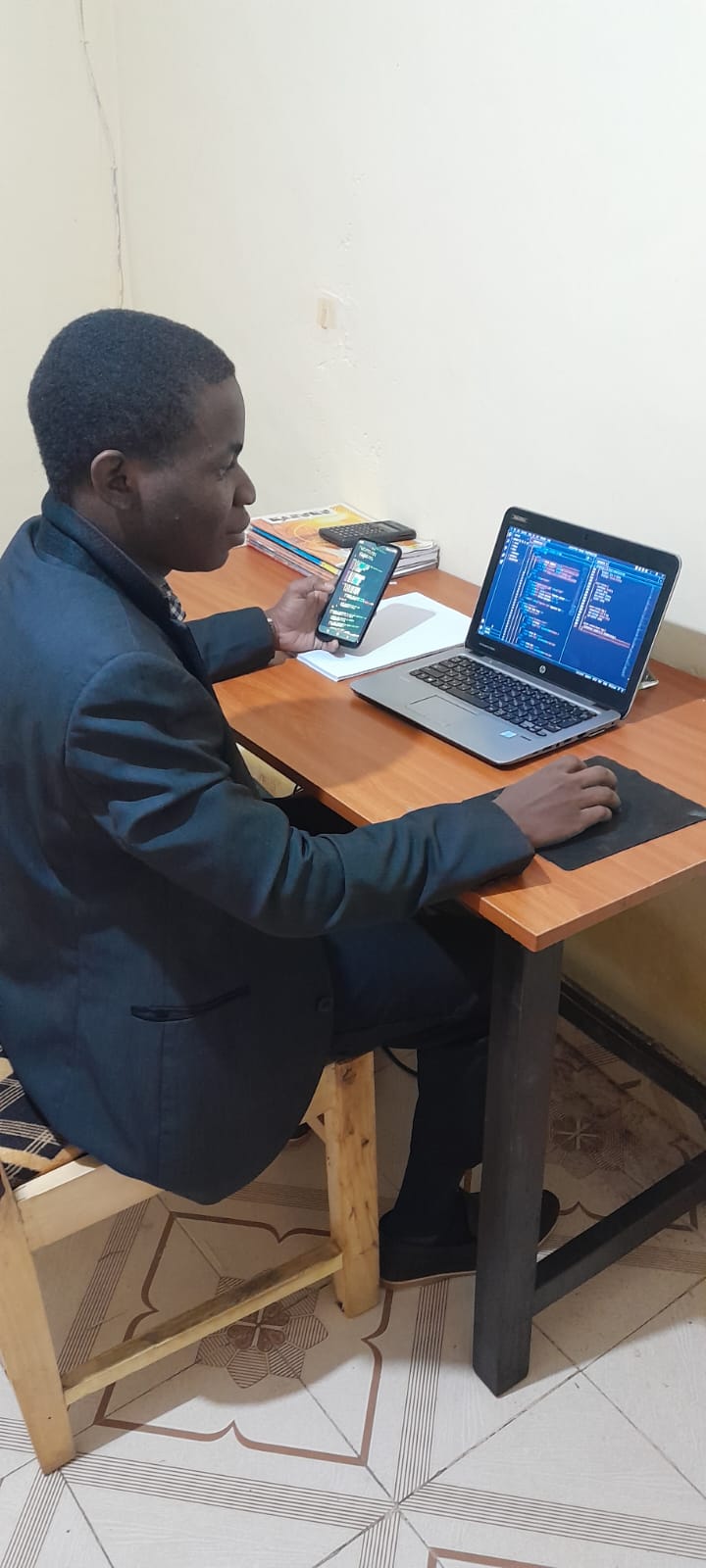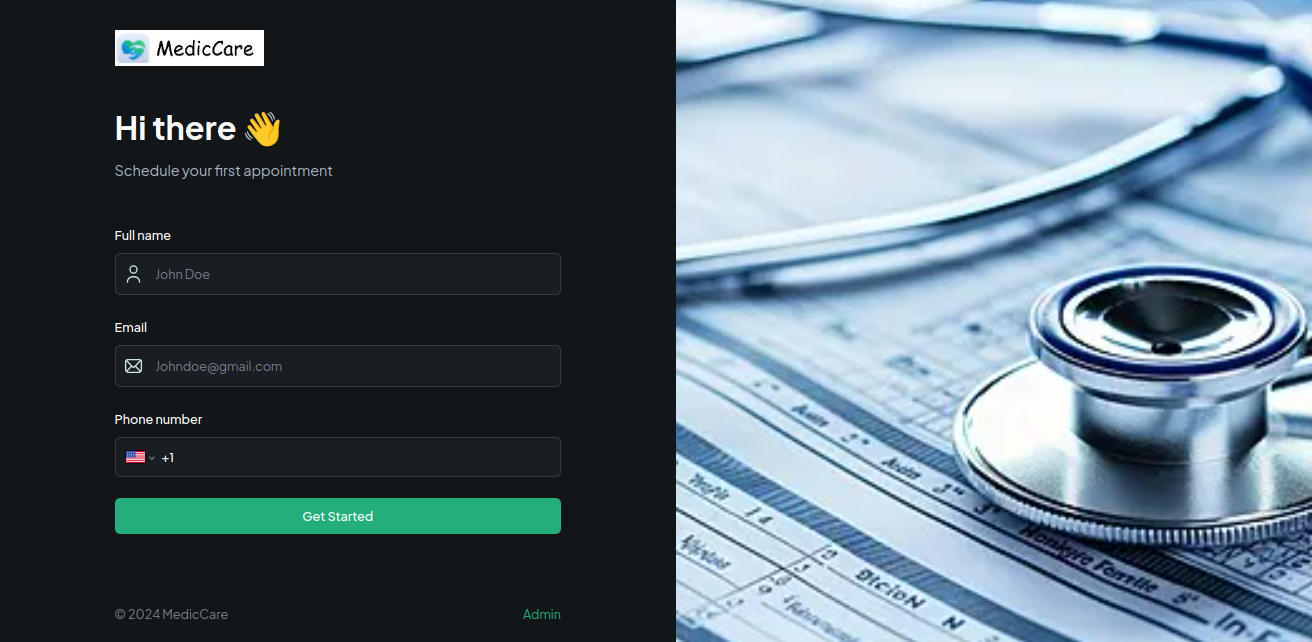Patient Management System
 Shabani A. Mwamtindi
Shabani A. Mwamtindi
Introduction
Growing up, I never thought I'd find myself developing a patient management system. My childhood was spent in a small rural town where healthcare was more of a luxury than a right. Our local clinic was a small, understaffed facility that served several neighboring towns. I vividly remember the long waits, the overworked staff shuffling through stacks of paper records, and the frustration on patients' faces.One particular memory stands out. I was 12 when my grandmother fell ill. We rushed her to the clinic, only to find a chaotic scene. The receptionist couldn't locate her records, the doctor was overwhelmed with patients, and we waited for hours in uncertainty. I felt helpless, watching my grandmother's condition worsen as we waited. That day left a lasting impression on me. I promised myself that someday, I'd find a way to make things better. As I grew older and discovered my passion for technology, I realized that this could be my avenue to effect change. Years later, when I started my journey in software development, that memory resurfaced. I saw an opportunity to bridge the gap between healthcare and technology. The idea of creating a system that could streamline patient management, reduce wait times, and potentially save lives became my driving force. This project isn't just about building a cool app or showcasing my technical skills. It's about fulfilling a promise I made to myself as a 12-year-old boy, watching his grandmother suffer due to an inefficient system. It's about ensuring that no other child has to feel that same helplessness. Every line of code I write, every feature I implement, is infused with the hope that somewhere, in a small clinic like the one from my childhood, a healthcare provider will be able to access patient information quickly, schedule appointments efficiently, and provide better care. As I work on this project, I often think about that overworked receptionist, that overwhelmed doctor, and all the patients waiting anxiously. I imagine how a system like this could have changed their day, and potentially their lives. It's this vision that keeps me going, even when faced with technical challenges or late nights of debugging. This patient management system is more than just a portfolio project for me. It's a step towards fulfilling a childhood promise, a way to give back to communities like the one I grew up in, and hopefully, a means to prevent others from experiencing what my family went through that day at the clinic.
Purpose:
Our Patient Management System is designed to streamline healthcare operations by providing an efficient, user-friendly platform for patient registration, appointment scheduling, and medical record management. It aims to improve both patient experience and healthcare provider efficiency through modern web technologies.
Team and Timeline:
As a solo developer, I've taken on multiple roles in this project, including full-stack development, UI/UX design, and project management. The project timeline spans 10 weeks, from initial planning to MVP delivery.
Target Audience:
This system is created for small to medium-sized healthcare practices, including general practitioners, specialists, and clinic administrators. It's designed to cater to the needs of both healthcare providers and their patients, offering an intuitive interface for managing healthcare information and appointments.
Personal Focus:
My primary focus areas for this project were:
Implementing a secure, HIPAA-compliant data management system using Appwrite as the backend service.
Creating a responsive, accessible user interface with Next.js and TailwindCSS that works seamlessly on both desktop and mobile devices.
Integrating Twilio for automated appointment reminders, with a particular challenge in handling international phone numbers, especially for Kenyan users.
Balancing the diverse needs of different healthcare professionals while maintaining a focused MVP scope.
Technology Choices
Frontend: We chose Next.js with TypeScript and TailwindCSS. Next.js provides server-side rendering capabilities, crucial for optimizing load times in a healthcare setting. TypeScript was selected to enhance code reliability and maintainability. TailwindCSS allowed for rapid UI development with a consistent design system.
Backend: Appwrite was chosen as our backend-as-a-service solution. It offers robust security features and simplifies HIPAA compliance, allowing us to focus on developing core functionalities rather than building backend infrastructure from scratch.
SMS Integration: Twilio was integrated for sending appointment reminders. Its reliable API and global reach made it ideal for our needs, especially when dealing with international phone numbers.
Error Tracking: Sentry was implemented for real-time error tracking and monitoring. This choice was made to ensure quick identification and resolution of issues in the production environment.
Hosting: Vercel was selected for hosting due to its seamless integration with Next.js and its robust CI/CD pipeline, enabling quick and reliable deployments.
Key Features
Secure Patient Registration and Authentication: Implemented a HIPAA-compliant registration process with secure authentication. This feature allows patients to create accounts, manage their personal information, and access their medical data securely.
Intelligent Appointment Scheduling: Developed an advanced scheduling system that allows patients to book appointments based on provider availability. The system includes conflict detection and sends automated SMS reminders, significantly reducing no-shows and improving clinic efficiency.
Responsive Design for Mobile Access: Created a fully responsive interface that adapts to various screen sizes, ensuring that both patients and healthcare providers can access the system efficiently from any device. This feature particularly benefits healthcare providers who need to access patient information on-the-go.
Most Difficult Technical Challenge:
“Integrating Twilio for Kenyan Phone Numbers”
Situation: Implementing SMS appointment reminders using Twilio was a crucial feature for the Patient Management System, as it would help healthcare providers and patients stay on top of scheduled appointments. However, integrating Twilio with Kenyan phone numbers proved to be a significant technical challenge.
Task: The goal was to develop a robust SMS reminder system that could reliably send messages to Kenyan patients, ensuring they received timely notifications about their upcoming appointments. This required addressing several complex factors, including phone number formatting, Twilio API configuration, character encoding, cost optimization, network reliability, and time zone handling.
What I've Learned
Through the development of the Patient Management System, I've gained invaluable insights and lessons that will undoubtedly shape my growth as an engineer. Here are the key takeaways from this project:
Technical Learnings:
Importance of Security and Compliance: Developing healthcare software requires a deep understanding of data privacy regulations, such as HIPAA, and the implementation of robust security measures. I've learned to prioritize security and compliance from the early design stages, rather than treating it as an afterthought.
Integrating Third-Party Services: Seamlessly integrating external APIs, like Twilio and Appwrite, was more complex than I initially anticipated. I've gained hands-on experience in managing API authentication, handling errors, and optimizing performance when relying on third-party services.
Responsive and Accessible Design: Ensuring a user interface that works seamlessly across desktop and mobile devices, while also being accessible to users with disabilities, was a significant challenge. I've developed a stronger appreciation for the principles of responsive design and inclusive development.
Modular Architecture: Breaking down the application into loosely coupled, modular components has proven to be an effective strategy for managing complexity and facilitating future extensibility. I'll apply this approach to my future projects as well.
Lessons Learned:
Stakeholder Management: Navigating the different needs and preferences of healthcare providers, administrators, and patients was a crucial non-technical skill I had to develop. I learned the importance of effective communication, consensus building, and iterative feedback loops when working with diverse stakeholders.
Scope Management: Defining and maintaining a clear MVP scope was essential to delivering a functional system on time. I've learned to be more disciplined in prioritizing features and making tough decisions to avoid scope creep.
Adaptability and Problem-Solving: Encountering unexpected challenges, such as the complexities of international SMS integration, required me to be flexible and think creatively. This project has strengthened my ability to research, experiment, and find innovative solutions to complex problems.
Collaboration and Peer Learning: Seeking input from mentors, healthcare professionals, and online communities has been invaluable. I've recognized the power of collaboration and the importance of being an active participant in developer communities to continuously improve my skills.
Personal Growth:
Confidence in Healthcare Software Development: Prior to this project, I was hesitant about venturing into the healthcare technology domain, as it seemed highly specialized and complex. However, this experience has instilled in me a newfound confidence in my ability to tackle the unique challenges of healthcare software engineering.
Embracing Continuous Learning: The rapid pace of technological change, especially in the healthcare sector, has reinforced the need for continuous learning. I'm now more committed to staying up-to-date with industry trends, regulations, and best practices to ensure the long-term relevance of my skills.
Appreciation for Interdisciplinary Collaboration: Working with healthcare professionals has broadened my perspective and made me appreciate the value of interdisciplinary collaboration. I'm now more interested in exploring opportunities to bridge the gap between technology and domain-specific expertise.
Commitment to User-Centric Design: This project has solidified my belief that user experience should be at the forefront of software development, especially in sensitive industries like healthcare. I'm dedicated to continuously improving my user-centered design skills to create solutions that truly meet the needs of end-users.
The Patient Management System project has been a transformative experience, challenging me to grow both technically and professionally. The lessons I've learned will undoubtedly inform my future engineering endeavors and shape my career path as I navigate the ever-evolving landscape of software development.
Conclusion
I'm always eager to tackle complex challenges and create innovative products. You can find more about me on my LinkedIn profile and explore my other projects on GitHub.
The Patient Management System project is available on GitHub, and the deployed application can be accessed at MedicCare.
Subscribe to my newsletter
Read articles from Shabani A. Mwamtindi directly inside your inbox. Subscribe to the newsletter, and don't miss out.
Written by

Shabani A. Mwamtindi
Shabani A. Mwamtindi
I'm a software security engineer enthusiast. My passion for software security has driven me to pursue a career in this field, and I'm always eager to learn more and share whatever knowledge I've gained.